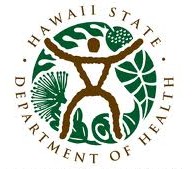Hawai‘i State Cancer Plan Unveiled for 2016-2020
The Hawai‘i Comprehensive Cancer Coalition unveiled the Hawai‘i State Cancer Plan for 2016 through 2020 earlier this week.
The plan is a vision and action document designed to reduce the burden of cancer in the state.
“The new State Plan illustrates that we have made great strides in cancer prevention and treatment, yet it is a burden still felt in our daily lives. Each of us has a family member or loved one who has been affected,” said Director of Health Virginia Pressler. “Improving screening and treatment is necessary to address the disparities that exist with men and minority populations.”
Men, Native Hawaiians and other Pacific Islanders are more likely to die from the disease than women and other ethnicities, suggesting that these groups are less likely to regularly be screened.
Cancer remains the second leading cause of death in Hawai‘i.
The Hawai‘i State Cancer Plan is based on national recommendations and was developed by key stakeholders from across the State. It organizes priority objectives under four major goals: Prevention, Early Detection, Equitable Access to Care, and Quality of Life.
Men in Hawai‘i are 1.5 times more likely to die from cancer than women, due in part to lower screening rates.
Between 2000 and 2014, men had 3,481 more cancer deaths than women. While screening rates have improved over the last decade for both sexes, men are less likely to survive diagnosis, suggesting that they were not diagnosed at an early enough state to prevent death.
In 2014, 9,200 more women than men were diagnosed with some type of cancer in Hawai‘i.
In terms of ethnicity, NHOPI are three times more likely to die from cancer compared to other ethnicities. This may be explained by lower screening rates, with NHOPI having rates 14% lower than Caucasians.
To address these disparities, the Plan includes strategies for prevention and early detection, such as improving colorectal screening among men by offering it in combination with other screenings, increasing cultural sensitivity among medical staff, and linking patient navigators to healthcare systems.
For both sexes, lung and bronchus cancer remains the leading cause of cancer death, and is responsible for more than one in every five cancer deaths in Hawai‘i.
Colorectal cancer is the second and third leading cause of death for men and women, respectively, with one in ten men and nearly one in ten women dying from the disease annually.
“Though deaths resulting from cancer are decreasing over time, it remains the fact that one in five deaths from all cancers are potentially avoidable,” said Cancer Coalition Chair Dr. Shane Morita. “The Hawai‘i State Cancer Plan gives us a roadmap to tackle these disparities, claim our victory over cancer, and ultimately save lives.”
To view the full State Cancer Plan, please visit here.















